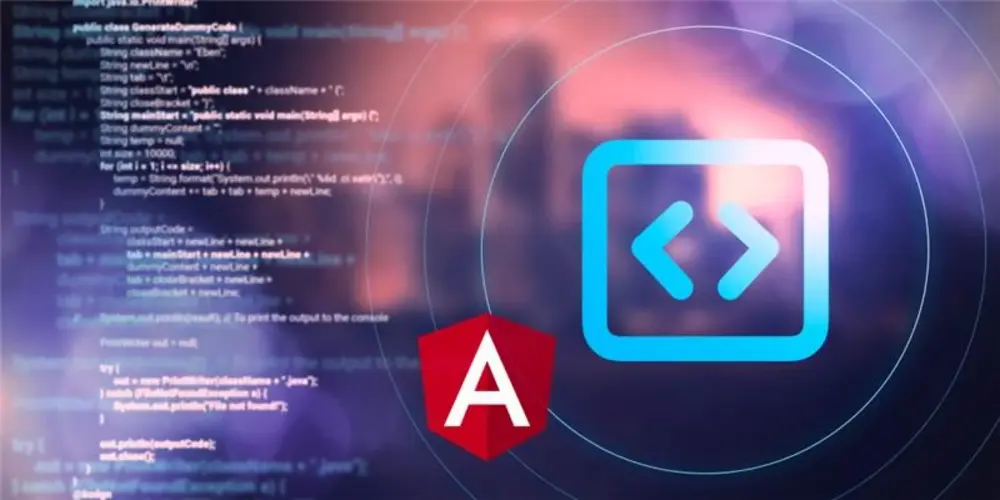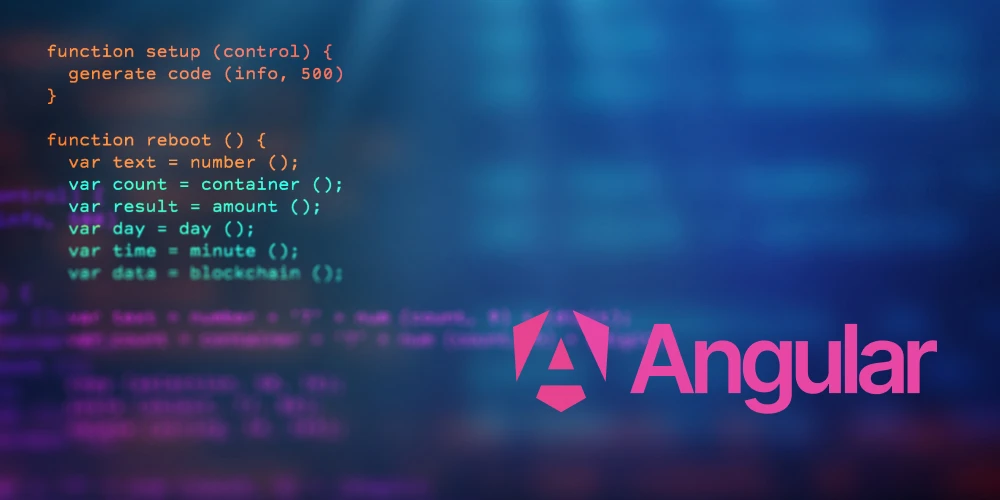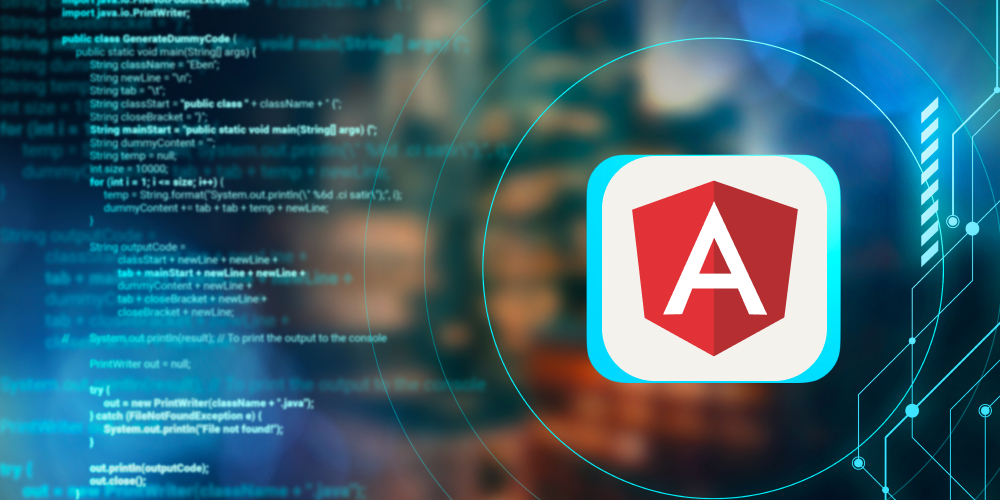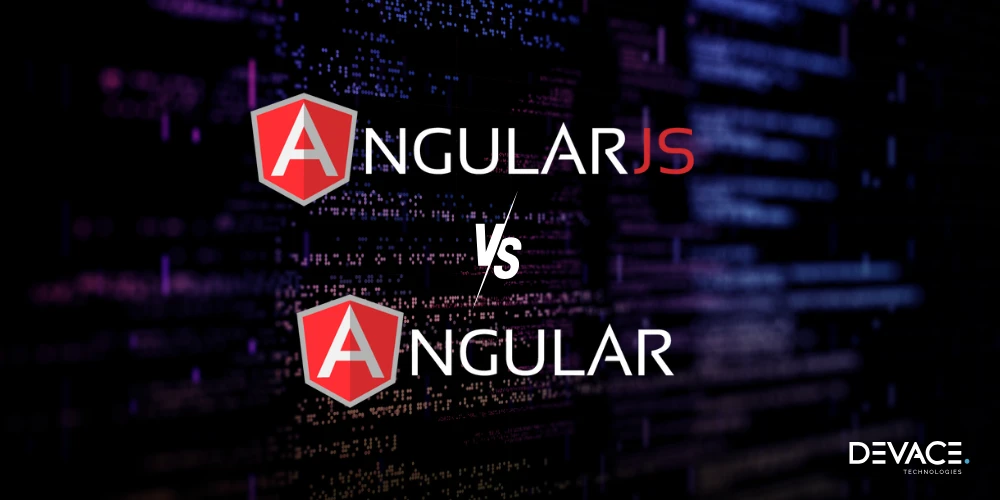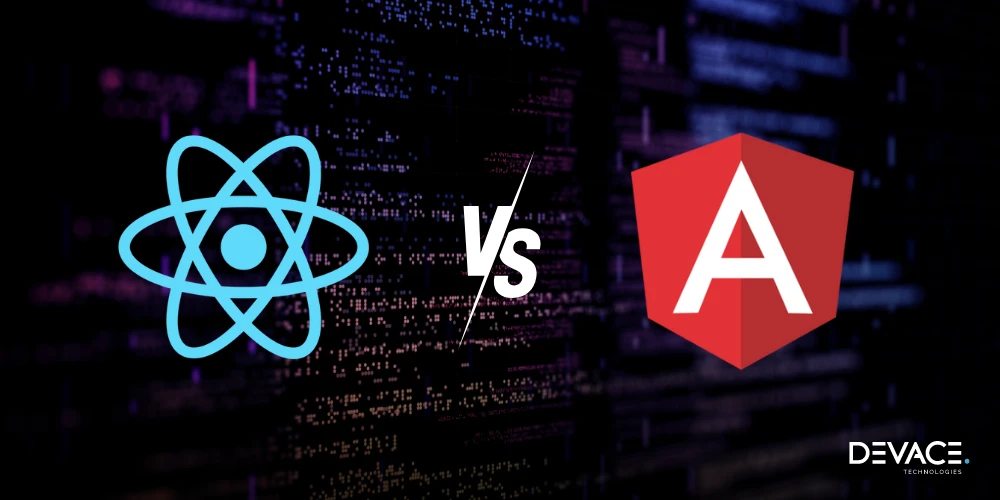If you are an Angular developer and searching for a suitable role, it is important to prepare well for the job interview. Such interviews cover a vast range of topics so you should be prepared for all sorts of questions, be they of basic, intermediate, or advanced levels. Through this detailed blog, you will dive into a sound collection of Angular interview questions and answers that are most asked.
Basic Level Angular Interview Questions for Developers
Let’s start with the basic level questions that an Angular developer might face during the interview:
1. What is Angular?
Answer: Angular is a framework and platform to create client-side applications with the help of CSS, JavaScript (TypeScript), or HTML. Angular offers a unique set of tools for developing interactive and dynamic web applications. Moreover, the true potential of two-way data binding, routing, modular architecture, and dependency injection of this framework is utilized. It is mostly used for developing single-page applications.
2. How Can You Differentiate Between Angular and AngularJS?
Answer: The original version of the Angular framework is AngularJS. While Angular 2 and above versions are complete rewrites of AngularJS. TypeScript was used to build Angular (usually called Angular 2+) providing better support for features such as type-checking and object-oriented programming. On the other hand, AngularJS is based on JavaScript.
3. What Do You Know About the Components in Angular Framework?
Answer: In Angular, the building blocks of the user interface (UI) are components. It monitors and controls the view which is a part of the screen. Also, it consists of a TypeScript class, a CSS style sheet, and an HTML template. With the help of the @Component decorator, components are defined. For the development of web applications, they also play a crucial role.
4. What are Directives and Why They are Used in Angular?
Answer: Directives in the Angular framework are mostly utilized for extending HTML functionality. They can also alter the behavior of DOM elements, introduce new elements, or manipulate the existing ones.
In Angular, we have three types of directives including attribute directives, structural directives, and components directives.
| Directives | Description |
|---|---|
| Attribute directives | They are used to alter the behavior or appearance of elements. |
| Structural directives | Can manipulate DOM layout |
| Components directives | Simple Angular components |
5. Have You Heard of Data Binding in Angular?
Answer: This is a mechanism in Angular to synchronize the data (model) and view (UI). Moreover, multiple kinds of data binding are backed by the Angular framework.
| Type | Details |
|---|---|
| One-way data binding | Binds data in one way e.g. Event binding Property binding |
| Two-way data binding | Binds data in both directions e.g. ngModel |
Hire Angular developers for smooth data synchronization
Intermediate-Level Angular Interview Questions for Developers
After having some basic level questions let’s get into what kind of Angular questions can be asked in an interview, particularly about any version (such as Angular 2 interview questions or Angular 4 interview questions):
6. How Do You Define Dependency Injection in Angular?
Answer: In Angular, dependency injection is a pattern that is utilized to gain inversion of control. In this way, services and components become independent of any dependencies. With the help of dependencies, Angular developers can inject objects and services into other services, directives, and components. So that, it will promote easier user testing and reusability.
7. What are Observables?
Answer: We use observables in Angular for managing asynchronous functionality such as time-based events, user inputs, or HTTP requests. Moreover, observables provide values with time, and then you can subscribe to these values. Angular works with observables through a library which is Reactive Extensions for JavaScript (RxJS).
8. Why is Angular Router Used?
Answer: In a single-page application, we can use Angular Router to navigate between multiple pages and views. Also, with Angular Router we can define routes and then can easily map them to particular components. Through routers, Angular developers can control lazy loading modules, navigation behaviors, and passing parameters.
9. How Can You Use Pipes in Angular?
Answer: When we work with data and want to transform it before display, we use pipes in Angular. Different built-in pipes are offered by Angular such as CurrencyPipe, UpperCasePipe, and DatePipe. Moreover, for data manipulation, custom pipes can also be designed.
10. What is the Command Line Interface in Angular?
Answer: The Command Line Interface (CLI) in Angular is a user-friendly and powerful tool. It also simplifies the workflow of Angular application development. It is used for the automation of usual tasks that developers come across during web application development.
Here some key features of Angular CLI are jotted down:
| Key Features of Angular CLI | Description |
|---|---|
| Project Setup | A single command can automatically generate a project structure. |
| Code Generation | With commands like ‘ng generate component’ or ‘ng generate service’, components and services can be created. |
| Development Server | Easy to run apps locally with a built-in Angular development server. |
| Building and Deployment | Streamline app building and deployment process. |
| Testing Support | Testing of individual components and the whole application. |
| Quick Updates | Taking care of the security and performance of web apps. |
You can hire remote developers to leverage all these above-mentioned features of Angular CLI.
Advanced Angular Interview Questions for Developers
Now let’s read some advanced Angular interview questions that can be asked:
11. In Angular, How Would You Define Lazy Loading?
Answer: In Angular, lazy loading is a strong technique for optimizing web application’s performance, especially in loading times. With Angular we can only load the app’s desired features and modules if needed rather than loading them at once. For instance, in the case of a large application with multiple feature modules, any module can be loaded when a specific part of the application is navigated by users.
12. What are Angular Services?
Answer: The Angular services are packed with business functionality and logic that can be shared across different components in web applications. These services are specialized in handling certain tasks such as interaction with external services, state management within apps, and data fetching from APIs. Also, these services are important due to their ability to be injected into other directives or components with the help of the Angular dependency injection system.
13. How NgRx Function in Angular?
Answer: For Angular applications, NgRx is a state management library. In case web application has complex logic that needs to be handled more predictably. With NgRx developers can handle state changes in a more maintainable and organized fashion. Moreover, the central idea behind NgRx was storing the entire state of web applications in a centralized store.
14. What is an Angular Change Detection System?
Answer: In Angular, the change detection system ensures that with any change in the application data view it gets updated to reflect that change. In this way, the user interface and the application’s state can be kept in sync. Moreover, there is a built-in change detection which is used by Angular called Default Change Detection. It also uses the OnPush Change Detection strategy for detecting any change in the component’s input or event inside any component.
15. Elaborate Angular Universal
Answer: It is an application for rendering Angular applications on the server-side. With Angular Universal, it becomes easier to render applications on the server before sending them to a browser called server-side rendering. Moreover, it enhances the application’s initial loading time.
Scenario-Based Questions for Angular Developers
Here we have jotted down some Angular interview questions for experienced developers:
16. How would you manage a performance bottleneck in Angular applications?
Answer: In this case, I would analyze the whole Angular application with the help of certain tools like ngAfterViewChecked or ngOnChanges. After identifying the inefficient questions or components I would work on optimizing change detection through the OnPush strategy followed by performance improvement through Angular Web Workers.
17. What would be your strategy to deploy role-based access control in Angular?
Answer: For deploying role-based access control in Angular, I would prefer Angular’s Router guards such as CanLoad or CanActivate for verifying the user’s role before allowing access to a particular route.
Coding and Practical Angular Questions
Some similar sort of tasks might be assigned to you to assess your technical and problem-solving skills:
18. With ngFor code a component to display a list of items
Answer:
For displaying a list of items with ngFor:
@Component ({
selector: ‘app-item-list’,
template:
<ul>
<li *ngFor= “let item of items” > {{ item.name }} </li>
</ul>
})
export class ItemListComponent {
items = [{ name : ‘Item 1’ }, { name : ‘Item 2’ }, { name : ‘Item 3’
}];
}
Avail seamless Angular development services with Devace
19. Make an HTTP Request in Angular
Answer:
An HTTP request can be made through:
import { HttpClient } from ‘@angular/common/http’;
@Component ({
selector: ‘app-data-fetch’ ,
template: ‘<div> {{ data | json }} </div>’,
})
export class DataFetchComponent {
data : any;
constructor (private http : HttpClient ) {
this. http. get (‘https:// api. example. Com/data’)
.subscribe ( response=> {
this.data = response ;
});
}
}
20. How would you manage form validation with reactive forms in Angular?
Answer:
This given command can be opted for handling form validation:
import {Component} from ‘@angular/core’;
import {FormGroup, FormBuilder, Validators} from ‘@angular/forms’;
@Component ({
selector: app-reactive-form',
template:
<form [formGroup]= “myForm” (ngSubmit)= “onSubmit()”>
<div>
<label for= “name” >Name</label>
<input id= “name” formControlName= “name” />
<div *ngIf= “myForm.get (‘name’ ).invalid && myForm.get (‘name’ ).touched” >
Name is required!
</div>
</div>
<div>
<label for= “email” >Email</label>
<input id= “email” formControlName= “email” />
<div *ngIf= “myForm.get (‘email’).invalid && myForm.get (‘email’).touched”>
Invalid email address.
</div>
</div>
<button type= “submit” [disabled]= “myForm.invalid” >Submit</button>
</form>
})
export class ReactiveFormComponent {
myForm: FormGroup;
Constructor (private fb: FormBuilder) {
this.myForm = this.fb.group ({
name: [“, Validators.required],
email: [“, [Validators.required, Validators.email]]
});
}
onSubmit() {
if ( this.myForm.valid ) {
console.log ( this.myForm.value );
}
}
}
21. How would you deploy a custom directive in Angular?
Answer:
Through the given code, a custom directive can be implemented in the Angular framework:
import {Directive, ElementRef, Renderer2, HostListener } from ‘@angular/core’;
@Directive ({
selector: ‘[appHoverHighlight]’
})
export class HoverHighlightDirective {
constructor (private el: ElementRef, private renderer: Renderer2) {}
@HostListener(‘mouseenter’ ) onMouseEnter () {
this. renderer. setStyle ( this. el. nativeElement, ‘background-color’, ‘yellow’);
}
@HostListener (‘mouseleave’ ) onMouseLeave (){
this. renderer. RemoveStyle (this. el. nativeElement, ‘background-color’);
}
}
Wrapping Up
For smooth development of Angular-based applications companies hire Angular developers and for that, they conduct technical interviews. That’s why, to assist you in such interviews, we have given questions and their detailed answers from basic to advanced levels in this guide. So that, you can get a complete idea for how to prepare for your upcoming interview for the position of Angular developer.
Frequently Asked Questions
Which is the most recent and major version of Angular?
The most recent major version of Angular, Angular 14, was released in 2025. Although it is the latest version, Angular continues to be improved with new additions and features with every new release. For instance, Angular 14 is packed with better tools for web development, easy form handling, and better safety.
What are the latest features of Angular 19?
Although Angular 19 has just been released developers are excited about its new features on the basis of Angular community feedback and roadmaps. Some of the key features include better server-side rendering abilities, improved TypeScript integration, Angular CLI improvements, and State management and reactive forms.
What skills are Angular developers proficient in?
An experienced Angular developer is proficient in multiple web development tools and skills essential for optimizing, designing, and maintaining Angular applications such as TypeScript, Angular CLI, RxJS, Routing, Forms, component-based architecture, State management, testing, version control systems, and backend integrations.
Can an Angular developer work remotely?
Yes, for sure an Angular developer can work on a remote basis. Infact, due to growing demand for expert Angular developers many companies prefer to hire Angular developers for remote work because it is feasible, especially for front-end development. Moreover, for remote work developers should have proficiency in Angular tools.
Do Angular developers require continuous learning in their career path?
Yes, just like other fields continuous learning is essential for Angular developers. As Angular framework upgrades with every new launch, developers should stay updated and have knowledge of new features. So that they can smoothly develop web applications.
How can Devace help you find the right Angular developer?
Devace, specialized in connecting businesses or companies with expert Angular developers, can provide the best developers. Whether you are planning to optimize your application’s front end or need an Angular developer for full-stack applications, Devace can assist you well.
